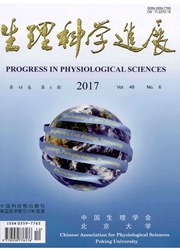

 中文摘要:
中文摘要:
Telomere 假定 intra 分子 G 四倍那是为在癌症禁止 telomeres 的 telomerase 维护的一个重要的药目标。金属阳离子作为在稳定起重要作用被认出了 G 四倍,但是他们的有约束力的过程到人的 telomeric G 四倍的遗体 uncharacterized。调查详细有约束力的过程,分子的动力学模拟在混血儿上被进行[3 + 1 ] 形式一个人 telomeric intra 分子 G 四倍。我们这里证明到一个 G 四个核心的一个钾离子的绑定被二条其他的小径调停。主要部件分析说明了主导的一致运动 G 四倍发生在循环域。MM-PBSA 计算表明那绑定由静电的相互作用精力充沛地有利、驾驶。更低的有约束力的地点被发现更建设性为有利有约束力。我们的数据在人的 telomeric 的调停钾的稳定的结构上提供有用信息 intra 分子 G 四倍,在离子混乱含有联系了 conformational 变化并且指向了药设计。
 英文摘要:
英文摘要:
Telomere assumes intra-molecular G-quadruplex that is a significant drug target for inhibiting telomerase main- tenance of telomeres in cancer. Metal cations have been recognized as playing important roles in stabilizing G-quadruplex, but their binding processes to human telomeric G-quadruplex remain uncharacterized. To in- vestigate the detailed binding procedures, molecular dynamics simulations were conducted on the hybrid [3 + 1] form-one human telomeric intra-molecular G-quadruplex. We show here that the binding of a potas- sium ion to a G-tetrad core is mediated by two alternative pathways. Principal component analysis illustrated the dominant concerted motions of G-quadruplex occurred at the loop domains. MM-PBSA calculations revealed that binding was energetically favorable and driven by the electrostatic interactions. The lower binding site was found more constructive favorable for binding. Our data provide useful information on a potassium-mediated stable structure of human telomeric intra-molecular G-quadruplex, implicating in ion disorder associated conformationa| changes and targeted drug design.
 同期刊论文项目
同期刊论文项目
 同项目期刊论文
同项目期刊论文
 期刊信息
期刊信息
